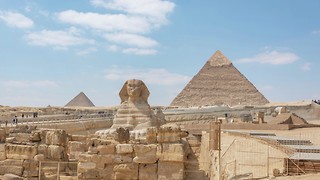Art: Selected Works of Rhonda Whitehead
Annie Forbes is immersed in the vibrant detail of Rhonda Whitehead’s latest work.

Since graduating from the Royal College of Art in 1971, Rhonda Whitehead has continued to gather steady critical acclaim and it’s easy to understand why. Her latest exhibition in the New Hall gallery at Murray Edwards confirms her as an artist at the height of her powers, gifted with an acute ability to perceive and record the details and nuances of her observed environment. To walk the length of the exibition is to experience an extraordinary symphony of colours and textures, creating a sustained meditation on natural change. Everyday instances of decay, such as the gradual weathering of an urban buildings, or the breakdown of vegetation, are rendered in abstraction, to produce works that are vibrant, unsettling and endlessly absorbing.

In many ways, her working methods are mimetic of the natural cycles of accumulation and disintegration which she seeks to capture. Composite layers are built up from a mixture of oil and sand before being scratched away, in a painstaking process of edification and erosion. Each canvas is a densely mesmerising micro-world of texture, detail and perspectival play. Whitehead seizes on the tiniest of details, a section of masonry, a clump of lichen, and scales them up to the result that they unfold like endless terrain .
Across the breadth of these collected works, colour is used to create a tonal register in which is dazzling in scope and variety. 'Erosion, Lime Green' is a vibrant study in deep blues and dense, mossy greens, which manages to convey at once the tranquil indolence of a sun-dappled pond and the kinetic energy of rushing reflections. The bucolic calm of this piece stands in stark contrast to the subtle menace of 'Erosion Dark Green'. Here decay is an entirely different beast, as spatters of red and blue combine to produce a dark nebula of encroaching mould, evoking contamination, infection and disease. Shifting the focus to to disintegration of man made structures, 'Trastevere', a muted study in greys and marls, is starkly evocative of the bleak beauty of urban decay, subtly suggesting the surface decline of a crumbling concrete facade.

Elsewhere, Whitehead's gift for noticing detail lends her the ability to create distinct and utterly idiosyncratic interpretations of place. Her 'Italian City Buildings' is a vast canvas of vivid terracotta, and stands utterly at odds with the muted, subdued smoky blue of 'Istanbul.' At times, such as in the complex 'Cases de Pene', joyful swathes of colour are interspersed with painstaking instances of etched detail, which are at once evocative of the charming naivety of Eardley's graffitied backdrops, and the skeletal, delicate calligraphy of Twombly.
The gallery space itself works brilliantly in tandem with the natural theme of the exhibition. Light floods in through its vast windows, underscored by the gentle murmur of birdsong. It provides a tranquil, neutral background against which the fragile quality of Whitehead’s works shines. Studies of plantlife and masonry alike seem to shift and reconfigure under the gaze. Her gift for capturing subtle shifts in mood results in pieces that are at once fugitive, evasive and haunting. In many ways their beautifully observed surface flaws brings to mind the Japanese concept of Wabi Sabi, which emphasises the true sublimity to be found in imperfection. In this exquisitely observed body of work, in which original pieces jostle among the old, Whitehead shows a constant ability to locate solace even from the depths of of decay.
'Selected Works of Rhonda Whitehead' is on display from 9.00am to 5.00pm at New Hall, Murray Edwards College, from the 11th May- 11th July.
 News / Oxbridge miss out on top 3 in university rankings for first time19 September 2025
News / Oxbridge miss out on top 3 in university rankings for first time19 September 2025 Features / Cambridge SU: has-been or never-was?16 September 2025
Features / Cambridge SU: has-been or never-was?16 September 2025 Comment / Dear finalists, please have fun19 September 2025
Comment / Dear finalists, please have fun19 September 2025 Arts / A walking tour of Art Deco Cambridge16 September 2025
Arts / A walking tour of Art Deco Cambridge16 September 2025 News / Ludwig filming returns to Cambridge17 September 2025
News / Ludwig filming returns to Cambridge17 September 2025









